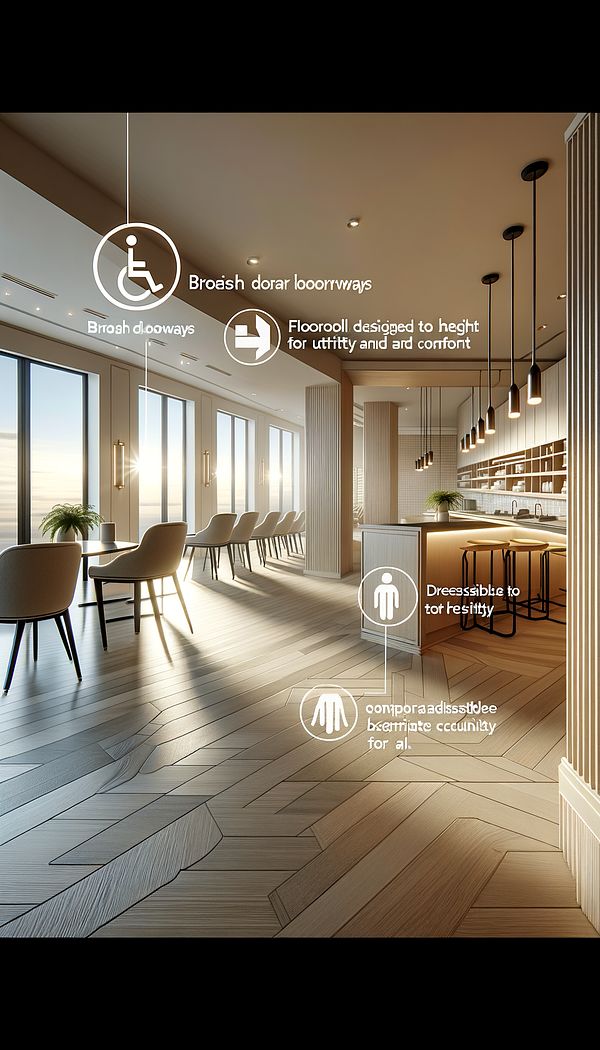What is Universal Design?
Universal Design is an approach to design that caters to the widest possible range of abilities, ensuring products and environments are accessible and usable by everyone, regardless of age, size, or disability.
Description
Universal Design is a concept that seeks to revolutionize the way we think about design by creating an inclusive environment for all. It advocates for the designing of products, environments, and even communications in a way that they can be accessed, understood, and used to the greatest extent possible by all people, without the need for adaptation or specialized design. This approach not only benefits those with disabilities but also accommodates a wide spectrum of human abilities and preferences, ensuring longevity and versatility in design.
The seven principles of Universal Design -- equitable use, flexibility in use, simple and intuitive use, perceptible information, tolerance for error, low physical effort, and size and space for approach and use -- lay the foundation for this inclusive approach. These principles guide designers in creating environments and products that are usable by everyone, to the greatest extent possible, without the need for modification or assistance.
In interior design, Universal Design principles are applied to create spaces that are accessible and comfortable for a wide range of users. This may include features such as wide doorways, lever handles instead of knobs, varied lighting options, and slip-resistant floors. By integrating these principles, designers can ensure that spaces are more functional and accommodating for all users, making everyday tasks easier and safer.
Usage
Examples of Universal Design in interior design include the installation of ramps alongside stairs for wheelchair access, adjustable-height counters in kitchens and bathrooms that can accommodate both standing and seated users, and the use of color contrast for better visibility of architectural features by those with visual impairments.
FAQs
-
What makes Universal Design different from accessible design?
Universal Design is broader than accessible design, as it not only addresses the needs of people with disabilities but aims to create environments and products that are usable by everyone, regardless of their abilities or age. Accessible design is more focused on meeting specific accessibility standards and regulations for people with disabilities.
-
How does Universal Design benefit the elderly?
Universal Design benefits the elderly by creating safer and more accessible environments. Features like no-step entries, single-level living spaces, and easy-to-use fixtures help accommodate decreased mobility and dexterity, making it easier for older individuals to live independently.
-
Can Universal Design be applied in existing structures?
Yes, Universal Design principles can be applied in retrofitting existing structures. Simple changes, such as replacing door knobs with lever handles or adding brighter lighting, can make a significant difference in accessibility and usability for a diverse range of users.
Practical Application
When considering Universal Design in your next project, start by assessing the needs of a broad range of users. Engage in empathetic design thinking to understand the challenges faced by people of different ages, sizes, and abilities. Apply the seven principles of Universal Design to guide your design decisions, ensuring that spaces and products are as inclusive, comfortable, and accessible as possible. Remember, what benefits some can often benefit many, making Universal Design a smart and ethical choice.
-
Design Styles478 articles
-
Lighting111 articles
-
Space Planning & Layout134 articles
-
Accessibility & Ergonomics30 articles
-
Construction & Building86 articles
-
VaseA vase is a container, traditionally made of glass or ceramic, used primarily for holding cut flowers or as a decorative piece.
-
Furniture DimensionsFurniture dimensions refer to the measurements of a piece of furniture, including the height, width, depth (or length), and sometimes weight.
-
Building PermitA building permit is an official approval issued by local government or regulatory authority for the construction or substantial alteration of a building.
-
Slat BackSlat back is a design feature characterized by vertical slats placed on the backrest of chairs or other furniture.
-
CarpetCarpet is a floor covering made from thick woven fabric.
